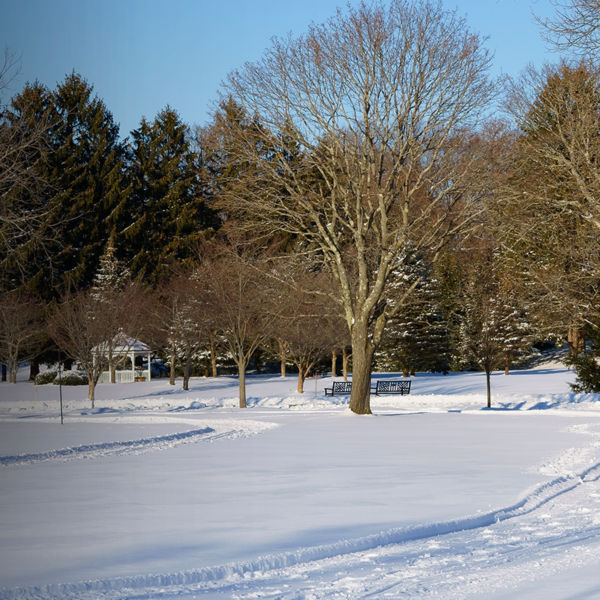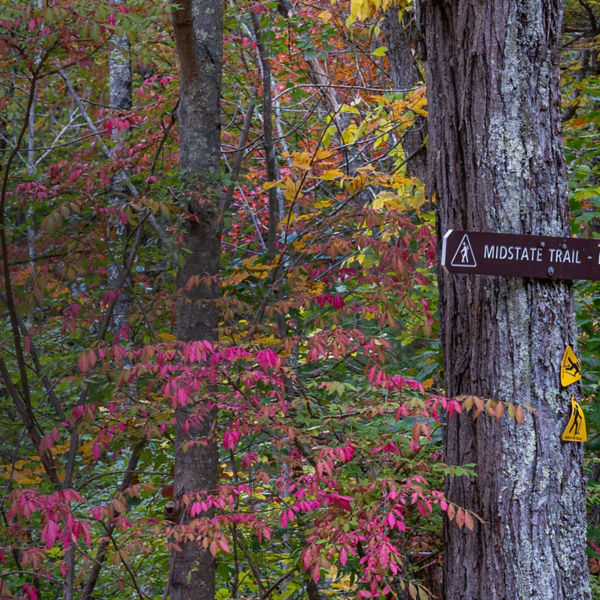Hiking Options
Some folks choose to go unsupported, meaning they pack everything they’ll need for the whole trail on their back and sleep at the lean-to shelters or primitive backcountry camping sites along the way. But in the 100 Mile Wilderness, you have a lot of options for assisted hiking. You can coordinate resupplies and food drops along the way so you don’t have to carry as much weight. Or, you can do what’s called slackpacking, which means hiking with a lightweight pack and having someone else drop the heavy overnight items at your next camp that you don’t need during the day. Additionally, there’s the option of sleeping in a bed at night and getting shuttled to the day’s section of trail each morning and completing the trail that way. The hiker support services listed below can help you plan and execute the best trip for you.
Shaw’s Hiker Hostel (Monson)
This hostel offers a variety of accommodations (tent, bunk room, private room), hot showers, warm meals, laundry, WiFi, and mail drops. It also provides a shuttle service for anywhere you need to go in the 100 Mile Wilderness.
100 Mile Wilderness Adventures and Outfitters (Monson)
Just two minutes from the AT and run by a longtime guide, you’ll find tent sites, cabins, and a bunkhouse here. Also offered are hot showers, WiFi, long-term parking, mail drops, fuel, and bike loaners for the 1.5-mile ride into town proper. Additional services include shuttles, trip planning, and emergency aid for hikers.
Appalachian Trail Lodge (Millinocket)
This lodge and hiker support service is located closer to the northern end of the 100 Mile Wilderness, but like the others, it offers shuttles and support along the entire trail. It has a hostel-style bunk room, private rooms, and suites available. Additional services include help with trip planning and slackpacking organization.
Seasons / Timing
Late June and July are generally regarded as the most ideal months to be out on the trail. You’ll avoid the spring mud season, the black-fly season in early June, the bulk of the tourist season in August, and the thru-hikers finishing the AT in September to early October. Less summer trail use makes it easier to get lodging in towns or at shelters on-trail. While temperatures are relatively mild during the middle of summer (highs in the 70s and lows in the 50s) there are often rainy days and even occasional snow at high elevations.
Details
No permits are required in most of the 100 Mile Wilderness, but a reservation is needed if you plan to sleep at a campsite or lean-to in Baxter State Park (which contains the northern end of the trail), and a permit is needed for all hikers who enter the park via the Appalachian Trail. The Appalachian Trail Conservancy has great maps for the 100 Mile Wilderness (available for purchase from the Maine Appalachian Trail Club).
Supplies
There are grocery stores and outdoor shops in both Portland and Bangor, and it’s easiest to show up in Monson with all your supplies (although there are small gear shops and places to resupply food and other items around the 100 Mile Wilderness if you need). The trail itself travels through lush terrain with copious water, so unless there’s a drought you can reliably expect to have easy access to water. Just bring a water filter along. Bugs can be a nuisance so come prepared with bug spray and/or protective clothing. Sturdy boots and trekking poles will make it easier to travel on the technical trail.
Wildlife
The biggest wildlife concern most hikers will face is the mice that frequent the lean-to shelters on the AT hoping to find tasty hiker food. It’s a good idea to always hang your pack/food bag or bring a bear bag or canister. Don’t leave food in your backpack; it will likely get chewed through! You might see other wildlife that live in the Maine woods, like moose, bears, or deer. If you happen to be on the trail in October (during bull moose mating season) you’ll want to give any moose you see a wide berth as they can be aggressive and territorial.





































